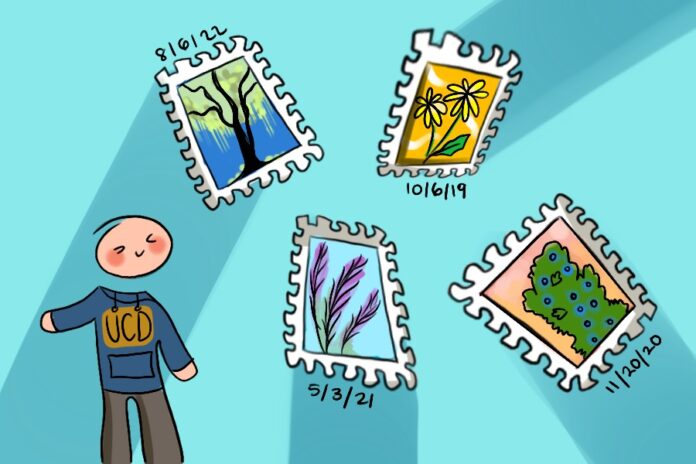Native Yolo County plants and their unique features
By MAYA KORNYEYEVA — mkornyeyeva@ucdavis.edu
Davis, California and its surrounding area are situated in a unique location for plant diversity. Located predominantly in the Central Valley, the region boasts a warm climate and an abundance of wetlands, making it a diverse site for both flora and fauna.
Each and every species has a unique beauty, which adds not only ecological value to Davis, but is a constant reminder of something intrinsically special in the world we often take for granted. Below, I will share with you some of my favorite native Davis plants that I have come across in the past few months and how to identify them.
Black Willow
These trees are similar to the famous “Weeping Willows,” with long, pointed leaves and a rich brown-black bark. The Black Willow can grow up to 60 feet tall, and its branches stretch upward rather than droop down. Due to their dependence on water, Black Willows thrive near water sources and have long-reaching root systems that prevent erosion and help with soil stability. You’re sure to spot one on a hiking trail near a river, such as Putah Creek in Davis.
Blue Elderberry
This shrub is a species that thrives in hot climates and relies on regular exposure to sunshine for optimal growth. Its dark blue berries are a primary food source for many small animals, birds and insects in the Central Valley. The tiny cream-colored flowers of the Blue Elderberry are scentless and look similar to Jasmine blooms. These bushes can be found in the fields on the outskirts of central Davis.
Gumweed
Like the name suggests, Gumweed is a quick-growing plant with distinct sticky buds filled with resin. Upon flowering, Gumweed has bright yellow flowers with a sweet smell that makes you stop and search for its source. Despite its prickly appearance, this native California flower has a long history of medicinal use, from curing inflammation to easing coughing and asthma when brewed as a tea or made into a tincture. Gumweed plants are quite common, and you can find plenty in flat open fields.
Purple Needlegrass
This plant can grow to be quite tall and sharp. It spreads its seeds by dropping them in the soil, where the pointy, needle-like ends burrow into the ground and secure the seed. Purple Needlegrass is excellent for preventing soil erosion, and its fluffy, purple tips are unmistakable. The plant has adapted to grow best in dry soil, making it a common staple in Davis parks and along highways.
These are just four of the many species that are native to Northern California. Next time you’re out and about, I encourage you to seek out native plant species and try to identify them. Learning a little more about Davis vegetation has not only made me more appreciative of the land we live on, but also a more keen observer of the natural world.
As broadcaster and natural historian David Attenborough famously says, “An understanding of the natural world is a source of not only great curiosity, but great fulfillment.”
Written by: Maya Kornyeyeva — mkornyeyeva@ucdavis.edu
Disclaimer: The views and opinions expressed by individual columnists belong to the columnists alone and do not necessarily indicate the views and opinions held by The California Aggie.




